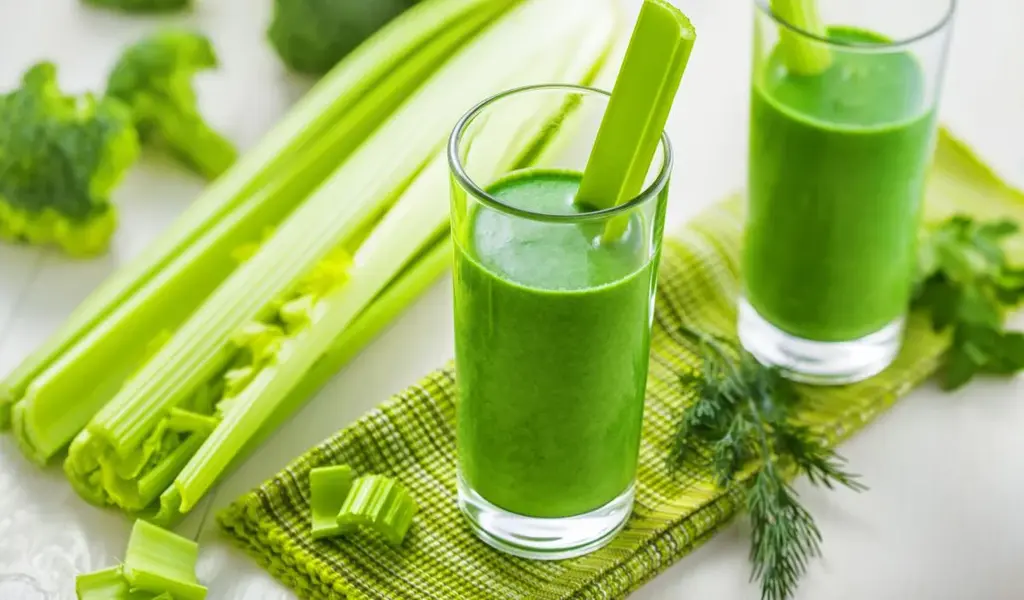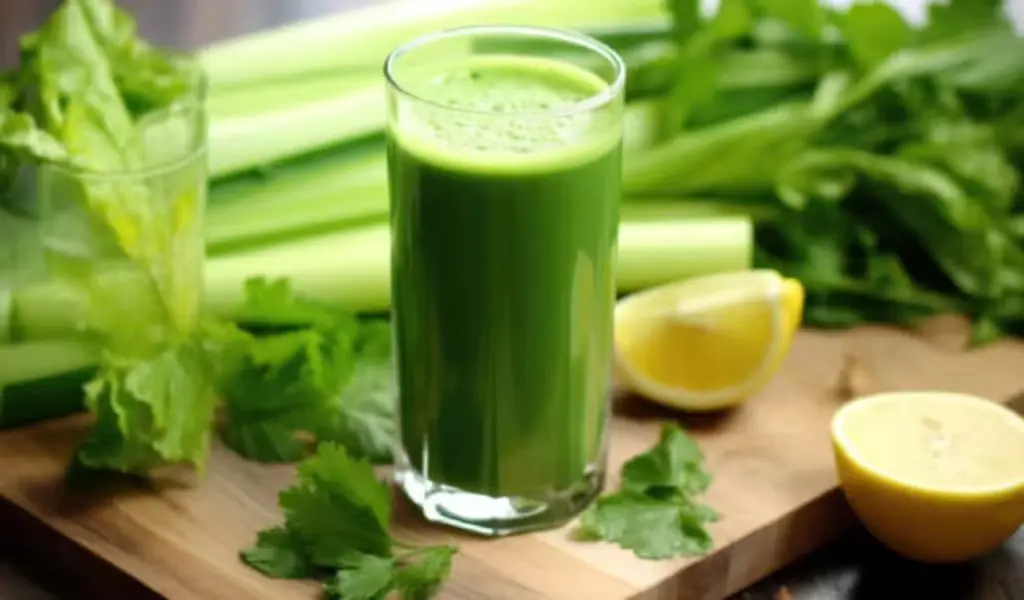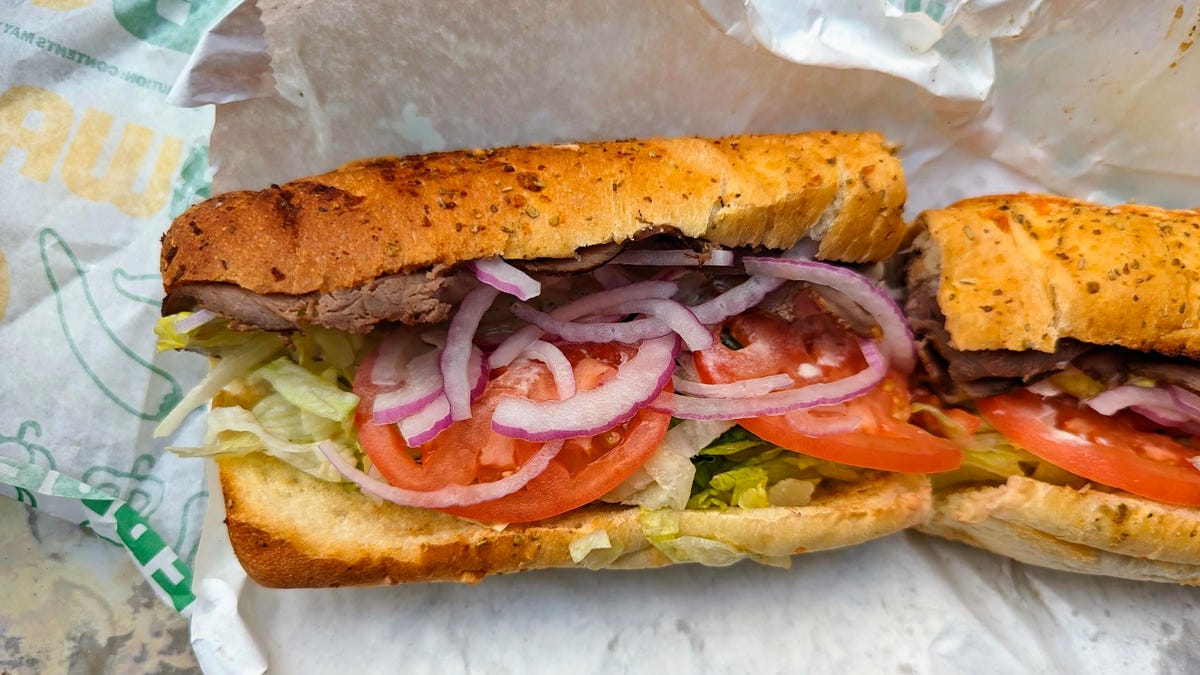Food
Celery Juice’s Nutritional Benefits: 6 Reasons Why it’s Good For You

(VORNews) – A platter of vegetables is never complete without red peppers, carrots, or cherry tomatoes. Celery is one of those green, leafy vegetables we always avoid eating. Some vegetables provide more nutrients than others, such as celery. In addition to its health benefits, celery juice has several other advantages as well!
As a vegetable, celery belongs to the Apiaceae family, which consists of green, crunchy leaves. The plant belongs to the same family as carrots and parsley and grows in marshes. Celery is commonly used in salads, soups, snacks, and soups because of its distinct flavor and high water content.
Celery is a low-calorie food that provides essential nutrients like vitamins K and C. It is known for its crisp and crunchy flavor as well as its low calorie content and high water content.
The stalks are long, pale green, fibrous, and sturdy, with leaves on top. Drinking celery juice first thing in the morning is the best way to incorporate celery into our diet.
How does celery juice benefit your health?
According to nutritionist Avni Kaul, celury juice may be good for your overall health.
1. A cup of celery can provide hydration and nutrients
The high water content of celary juice helps to replenish fluids in the body, making it a beneficial source of hydration. Avni Kaul says celary juice contributes to a well-rounded diet by supplying essential nutrients like vitamins A and K.
2. Properties that reduce inflammation
Several antioxidants and anti-inflammatory compounds in celery might help reduce inflammation in the body, potentially benefiting individuals with inflammatory disorders.
3. Support for heart health
Celery contains compounds like phthalides that may lower blood pressure, promoting cardiovascular health. Celery’s fiber content may also assist in maintaining a healthy cholesterol level.
4. Aid for digestion
Natural diuretics in celery juice may help promote a healthy digestive system by flushing out toxins. In addition to supporting regular bowel movements, fiber reduces the chances of constipation.
5. Controlling weight
Celery juice, owing to its low caloric and high water content, may prove advantageous in supplementing a weight management regimen by supplying essential nutrients while avoiding surplus calories.
6. Enhances the health of the skin
Celery juice’s antioxidants combat oxidative stress and promote a radiant complexion, contributing to skin health. The hydration that celery juice provides also contributes to the overall hydration of the skin,” adds Avni Kaul.
What is the best way to make celery juice?
To make celery juice, you would need the following:
Ingredients:
• Fresh celery stalks (organic if possible)
• Water (optional for dilution)
Preparation:
• Wash the celery stalks thoroughly.
• Trim the base and the leafy tops, leaving the stalks.
• If you have a juicer, pass the celery through the juicer.
• If using a blender, chop the celery into smaller pieces, add water, blend, and strain the juice.
How much celery juice should I drink each day?
Despite celery juice’s potential health benefits, maintaining a balanced diet and lifestyle is crucial. Celery juice shouldn’t be consumed in excess, either. Celery juice may cause different reactions in different individuals, so check with a qualified dietician before drinking it, especially if you have a preexisting health condition.
Trending Topics:
A Guide to Spotting Bitcoin ETFs for Everyday Investors and Retires in 2024
Food
2024 | Subway Announces A New Price For Footlongs As It Enters The Value Menu Wars

It’s not $5, but Subway is reintroducing affordable footlongs and entering the fast restaurant value menu war.
Beginning August 26, Subway will sell any footlong sandwich for $6.99, a significant savings given that certain footlongs may cost up to $14 in some cities. It’s the privately held chain’s latest attempt to entice back customers who are avoiding rising fast food pricing and spending less when they do go out.
The offer has a catch: it is only available through the app or website with the code “699FL” and expires on September 8.
Subway Announces A New Price For Footlongs As It Enters The Value Menu Wars
A private equity firm controls subway, and unlike its publicly traded competitors, it rarely discloses sales figures. However, according to trade publication Restaurant Business, its sales and traffic challenges this year are similar to those of McDonald’s, Burger King, and Starbucks.
“Today’s diner is more stretched than ever, and too often that means sacrificing quality, variety, or flavour to find an affordable meal,” said Doug Fry, president of Subway North America, in a press statement. “Our menu is full of footlongs for every budget, and this new deal means our guests can get the sandwiches they crave at a great value.”
Subway has also been diversifying its menu as sandwich prices have risen. The business recently began selling $3 Dippers other Sidekick snacks priced between $2 and $5 to attract cash-conscious customers who may be turned off by the higher prices of its other items.
The inclusion of Sidekicks and Dippers “makes sense,” according to David Henkes, senior principal at Technomic, who told CNN that Subway needed to generate income someplace as fast food customers began to push back on price increases due to inflation.
“They’ve underperformed in the sandwich segment, so they need to shake things up a little bit and drive some incremental traffic,” Henkes told investors. According to technological data, Subway falls behind competitors in terms of side and snack sales.
Subway Announces A New Price For Footlongs As It Enters The Value Menu Wars
Subway has recently added customisation to its menu, doubled down on driving orders to its app, expanded its worldwide footprint, and introduced freshly sliced meats, a significant departure from the company’s traditional approach of delivering cold cuts pre-sliced.
Another important challenge for Subway is its declining shop count: the firm closed more than 400 stores in the United States in 2023, the fewest since 2005 (20,133).
SOURCE | CNN
Food
2024 Inflation Comes For Your Oysters

Americans are paying more for oysters happy hours.
According to experts, the buck-an-oyster offer is all but dead, with some eateries raising costs as high as $2.50 per oyster.
Oyster happy hours are just one of the many aspects of American life that have become more expensive as prices have risen in recent years. While the US Federal Reserve has made progress in slowing the rate of price rises, inflation has remained persistently over the target, and Americans have been paying more for everything from groceries to rent to, yes, going to their neighborhood bar for an oyster deal with friends.
Inflation Comes For Your Oysters
Wholesale oyster prices skyrocketed to triple-digit highs in 2022 and only started falling late last year. However, according to the most recent Wells Fargo Agri-Food Institute analysis, general inflation pushed retailers to hike store pricing to prevent losing money on surplus oyster stock, even as sales and wholesale expenses fell.
Oysters used to be plentiful and (relatively) inexpensive, which made them ideal for pub fare.
“Historically, Americans would consume a lot of wild oysters, and because they were so abundant, they were at such a low price,” said Julie Qiu, co-founder of the Oyster Master Guild, a New York City-based oyster teaching organization. “People kind of anchored their perception of oysters being a cheap food until all the wild oysters pretty much went away.”
While Wells Fargo reports that wholesale oyster prices have dropped from the previous year’s high of $117 per gallon to $88, long-standing supply concerns compounded by climate change may imply that the prices shown on oyster bar menus will not fall anytime soon.
The largest supply issue driving market changes is a scarcity of wild-caught oysters, which industry experts say has been a concern for over a decade.
“We’ve had a number of both man-made and natural events that have caused problems with oysters,” said David Branch, sector manager at the Wells Fargo Agri-Food Institute. He cited the 2010 Deepwater Horizon oil spill in the Gulf of Mexico and a series of storms in Louisiana as high-profile disasters that destroyed oyster beds and drove the business to transition from wild-caught to farm-raised oysters.
Branch believes farms now provide up to 60% of the current oyster supply, an almost complete shift from 20 years ago when 70% of oysters were wild-caught.
Qiu echoed Branch’s conclusion, noting that the remaining wild oyster reefs are a mere fraction of their historical numbers.
“We are really relying on intensively farmed oysters, which means that they require a tonne of labour and personalised handling from people and sophisticated machinery,” she told me. “That is beginning to trickle down the supply chain. It comes into a restaurant, and the business has mark it up by a specific percentage to pay labour costs.”
While efforts to rehabilitate wild oyster reefs are underway, climate change complicates matters.
In addition to rising temperatures, extreme flooding and rain may alter ocean salinity, introduce new predators, or allow new diseases to thrive.
“Climate change hinders consistent growth… “There are just so many things that can go wrong when farming oysters,” Qiu added.
Despite the problems in the oyster market, demand has not slowed. According to Branch, interest in shellfish is increasing, fuelled by Gen Z and millennials eager to expand their culinary horizons. However, he claims that increased demand, along with dwindling supply, is driving prices even higher.
Inflation Comes For Your Oysters
“The industry has been trying to catch up and replace the loss of what we had with our wild-caught (supply),” he told me. “It’s still expanding, but it just hasn’t been as quick to fill the gap with what we had.”
Qiu is aware of the increasing interest in oysters as a luxury appetiser. She remains optimistic, however, that restoration efforts and sustainable farming will allow the sector to increase supply and stabilise pricing in the long run.
“We hope that one day we will get back to that space where you can have oysters as an affordable, healthy protein,” she told me.
SOURCE | CNN
Food
Gen Z Wants Flavorful Drinks. Here’s How Big Beer Is Trying To Attract Them

Beer and hot dogs are as patriotic as they get. However, when you open the cooler at your July 4th cookout, you may see fewer beers, with alternatives such as spiked seltzers, canned cocktails, and hard teas taking their place.
And you may blame the young people for it. According to NIQ’s Kaleigh Theriault, the youngest group of legal-age drinkers, Gen Z, ages 21 to 26, are “drinking completely differently than any other generation we’ve seen before.”

Beer | PixaBay Image
“They’re new to drinking, and when they do, they tend to gravitate toward flavor-forward categories,” Theriault, an associate director of beverage alcohol thought leadership at the consumer intelligence firm, told CNN.
Gen Z Wants Flavorful Drinks. Here’s How Big Beer Is Trying To Attract Them
Smaller companies’ beverages dominate the landscape. E. & J. Gallo Winery’s High Noon reigns supreme in the spirit-based cocktail category; Mark Anthony Brands’ White Claw remains the best-selling spiked seltzer; and newer entrants, such as Surfside, a two-year-old brand that mixes liquor with iced tea or lemonade, are quickly gaining ground.
That’s a problem for Big Beer, dealing with flat sales, declining volume, and an inconsistent generation of younger drinkers who have abandoned the bottle or prefer anything other than regular beer.
In response, Miller Lite producer Molson Coors Beverage Company, Modelo brewer Constellation Brands, and heavyweight Anheuser-Busch InBev are among the biggest brewers widening their portfolio with delicious concoctions.
Fruit, in particular, has been a focal point because “it’s something that the consumer seems to be drawn to right now, and they want to drink something really good,” Theriault explained. Those flavors offer that.
Constellation drew inspiration from TikTok for its new beer, which is inspired by the “Corona Sunrise” cocktail, which combines tequila, Corona, orange juice, grenadine, and lime juice. The beer has taken off on the video-sharing app, with the most popular tutorial receiving roughly 14 million views.
Because it is illegal to sell a beer mixed with a spirit, Corona created its version to appeal to younger drinkers: the “Sunbrew Citrus Cerveza,” which is brewed with orange and lime peels, blended with the same juices, and mixed with a Corona Extra to mimic the sweet flavor of the cocktail counterpart.
“This new brew was created with the flavor-seeking Gen Z audience in mind, a group of drinkers known for their experimentation and mixing,” remarked Saúl Trejo, director of brand marketing at Corona. For now, the drink is only accessible in the northeastern United States, but if sales are strong, it may extend nationwide.
Sunbrew joins Constellation’s portfolio of Gen Z-oriented beverages, including Fresca Mixed and its malt-based beverages, Corona Refresca and Modelo Spiked Aguas Frescas. Both have fruity flavors and are selling well for the brand.
TikTok has also impacted Molson Coors’ newest boozy beverage, “Happy Thursday.” What is the schtick? It’s non-carbonated because “bloating that may come from carbonation is considered a top barrier” for younger drinkers, and the habit of “decarbonizing” drinks is gaining popularity on the app.
The “smooth, bubble-free” drink is available in four fruit varieties, including strawberry and black cherry. Its low alcohol concentration of 4.4% by volume fits another Gen Z desire. According to the brewery, the drink also comes in vivid packaging meant to “pop on social media.”
Happy Thursday, launched less than three months ago, is experiencing growth in sales and distribution, and feedback has been “extremely positive,” according to the company’s blog. The company may provide more information about its sales during its next earnings report, due in August.
Happy Thursday fits into the company’s goal, which began in 2019 when Molson Coors changed its name to reflect its expanding array of beverages other than beer. That includes hard iced tea, energy drinks, and the Simply Spiked line. Last year, it purchased Blue Run Spirits, a cult beloved high-end bourbon and rye whiskey company, as US spirit sales surpassed beer sales.
“In order to remain relevant, suppliers must evolve and follow where the consumer is trending — and right now, the consumer wants flavor,” NIQ’s Theriault said of their pivots. “Innovation is really important in the alcohol industry and ensuring that innovation is tied to the consumer trends is what’s right for business.”
Building ‘beyond beer’
Canned cocktails and spirits-based beverages have also aided Anheuser-Busch’s bottom line in the United States, particularly given Bud Light’s declining sales. Its aptly named “Beyond Beer” division currently accounts for $1.5 billion of its global revenue and is helping to recruit younger, legally aged drinkers.

Beer | Pixa Bay Image
Two standouts are NÜTRL, a tasty line of vodka seltzers, and Cutwater Spirits bottled cocktails. An Anheuser-Busch representative told CNN that Cutwater, which sells canned rum mai tais, vodka mules, and tequila palomas, has “steadily grown dollar sales double digits for five consecutive years” and is up 23% this year.
Gen Z Wants Flavorful Drinks. Here’s How Big Beer Is Trying To Attract Them
Still, Anheuser-Busch’s prospects are not sunny, especially when a beverage has the Bud Light label. Bud Light Seltzer sales are down 50%, according to trade newspaper Brewbound, surpassing a bigger drop in malt-based seltzers as drinkers turn to spirit-based beverages. The company debuted a new advertising campaign in 2023, only a few weeks before the Dylan Mulvaney scandal sank its parent brand’s sales.
Despite younger customers’ reluctance to purchase beer and low sales, Big Beer businesses are not facing an existential threat. According to one expert, the reverse is true.
“Young drinkers can now find just about any kind of drink in almost any kind of flavor practically whenever they want, and they get to choose from the most diverse collection of beverages that has ever existed — with and without alcohol,” Bryan Roth, an analyst for Feel Goods Company and editor of the alcohol beverage newsletter, Sightlines+, told CNN.
“These long-established, often historic businesses are adapting to the market. What’s really interesting is that consumers are increasingly taking the initiative,” he said.
SOURCE – CNN
-
Business4 weeks ago
Are You A Cash App User? You May Be Eligible For A Piece Of This $15 Million Settlement
-
Celebrity4 weeks ago
Liza Minnelli Is ‘Mad As Hell’ And Writing New Memoir
-
Business4 weeks ago
Susan Wojcicki, Former YouTube CEO And Longtime Google Executive, Has Died At 56
-
News4 weeks ago
Travis Scott Is Arrested At A Paris Hotel After Altercation With A Security Guard, Prosecutors Say
-
Sports4 weeks ago
Lydia Ko Finally Gets Her Olympic Gold. It Puts Her Into The LPGA Hall Of Fame
-
Entertainment4 weeks ago
Samsung Is Recalling 1 Million Stoves To Prevent Pets From Setting Your Home On Fire



:max_bytes(150000):strip_icc()/AR-subway-4x3-6e1f8bb7150647bbbc16a0605a394b86.jpg)




































